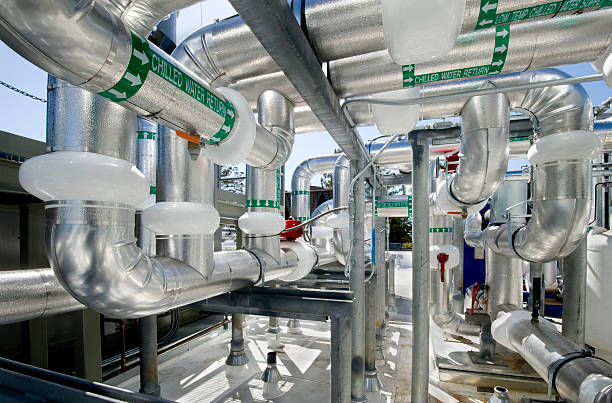Importance of Efficient Plumbing Layouts

In industrial settings, plumbing systems handle high-demand water use, steam, and sometimes chemicals. Efficient layouts reduce energy loss, prevent downtime, and extend system lifespan.
Key Principles of Industrial Plumbing Design
- Flow Efficiency – Designing with minimal bends and restrictions to reduce friction losses.
- Material Selection – Choosing durable, corrosion-resistant materials such as stainless steel or HDPE.
- Accessibility – Ensuring valves, pumps, and critical components are accessible for maintenance.
- Safety Compliance – Adhering to OSHA, ASME, and local building codes.
Water Distribution Planning
Strategic distribution ensures that water reaches all necessary points without pressure loss. Loop systems are often used in industrial designs to maintain balanced pressure.
Space Optimization in Layouts

Industrial plumbing must integrate with other infrastructure. Compact yet accessible designs prevent crowding and improve workflow within the facility.
Energy Efficiency in Plumbing Systems
Incorporating insulation, high-efficiency pumps, and smart monitoring systems reduces energy consumption and operating costs.
Integration with Building Management Systems (BMS)
Modern plumbing layouts can integrate with BMS for real-time monitoring, leak detection, and predictive maintenance.
Common Challenges and Solutions
- Challenge: Pressure drops in long piping systems.
Solution: Use larger pipe diameters and loop designs. - Challenge: Corrosion from industrial fluids.
Solution: Select appropriate materials and coatings. - Challenge: Limited installation space.
Solution: Use vertical routing and modular system designs.
Conclusion
Efficient industrial plumbing layouts are the foundation of reliable operations. By prioritizing flow efficiency, safety, and integration with modern technology, facilities can achieve cost-effective, long-lasting plumbing systems.
{ “@context”: “https://schema.org”, “@type”: “FAQPage”, “mainEntity”: [ { “@type”: “Question”, “name”: “Why is plumbing layout important in industrial settings?”, “acceptedAnswer”: { “@type”: “Answer”, “text”: “Efficient plumbing layouts ensure reliable water distribution, reduce energy costs, and support safe industrial operations.” } }, { “@type”: “Question”, “name”: “What materials are best for industrial plumbing systems?”, “acceptedAnswer”: { “@type”: “Answer”, “text”: “Materials like stainless steel, HDPE, and corrosion-resistant alloys are commonly used for durability and safety in industrial plumbing.” } }, { “@type”: “Question”, “name”: “How can energy efficiency be improved in industrial plumbing?”, “acceptedAnswer”: { “@type”: “Answer”, “text”: “Energy efficiency can be improved with insulation, high-efficiency pumps, smart monitoring, and integration with building management systems.” } } ] }
